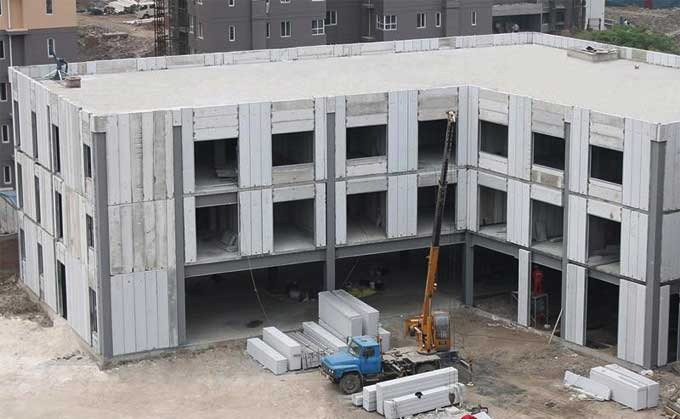NEWS | SOFTWARE | SHEET
What to Expect From Autoclaved Aerated Concrete in 2023
Building with autoclaved aerated concrete blocks can be an advantage or disadvantage in the construction industry. In high rise buildings, AAC blocks reduce dead weight and improve insulation by reducing dead load and increasing energy efficiency.
The construction industry has recently been using it widely in a variety of sectors. Compared to brick, AAC blocks have the main advantage of a lower price. It is cheaper to use AAC blocks than bricks, and they are also stronger.
Define Autoclaved Aerated Concrete
Sand, fly ash, cement, lime, gypsum, and aluminum powder make up autoclaved aerated concrete, an ecologically friendly building material.
As a lightweight and fire resistant precast material, autoclaved aerated concrete is superior in thermal insulation as well as fire resistance.
This type of concrete has 70 to 80% air that is produced from aluminum powder. Consequently, it is called Autoclaved Aerated Concrete because it is baked in an autoclave.
Autoclaved Aerated Concrete Construction Process
Mixing
Fly ash, cement, lime, gypsum, sand, aluminum powder, and other ingredients are mixed according to specific proportions in AAC. There is no coarse aggregate in the aerated concrete. Concrete air voids are created using aluminum powder.
Molding
A mold is molded after grease oil is applied to each side of the mold. Wet mix is then poured into the mold.
Pre-curing
The setting of the wet mix is part of the pre-curing process. A concrete setup time of 1 to 2 hours was required for the filled mold.
Cutting
This stage starts with scraping away the thin layer of AAC blocks at every side using an automatic cutting machine. In the next step, the sheet was cut horizontally and vertically according to the required size and shape.
Autoclave Curing
Curing AAC blocks, panels, and other types of AAC products is done by using steam and pressure to speed up the chemical reaction. With the help of a crane, AAC blocks and panels are first placed into the autoclave machine. In a subsequent step, it was heated to 215 degrees Celsius for 12 hours using steam and pressure.
Storage
After the AAC blocks have cooled, some samples are sent for quality testing and the remaining blocks are stored onsite based on their size and shape.
Autoclaved Aerated Concrete Applications
Filler walls in framed structures are typically constructed from AAC blocks. Building cavity walls with AAC blocks helps to increase a building's insulation by constructing the inner or outer leaves.
The use of AAC blocks on the roof or slab reduces the dead load of the structure, which in turn reduces the amount of steel needed in a structural member. Partition walls are constructed using AAC panels, which are insulating, lightweight, fireproof, easy to construct, easy to nail or screw, and easy to nail or screw.
Autoclaved Aerated Concrete Merits
- Lightweight materials such as AAC blocks help to reduce the dead building's load.
- In addition to being eco friendly, AAC blocks are fireproof and can easily be cut and shaped.
- Due to its flat shape and precision, it has less tolerance than other materials.
- It also has high insulation properties in addition to being sound and thermal insulating.
- Construction of AAC blocks is faster than other traditional construction methods.
- AAC blocks are energy efficient and resistant to wear and tear.
- It has a variety of shapes and sizes available in AAC blocks, which are termite free.
- Electrical conduit could be chased easily with this material because it was recyclable.
- The lightweight nature of structural elements reduces the amount of reinforcement needed.
- In the construction of AAC, less mortar is consumed.
Autoclaved Aerated Concrete Demerits
- There is a limited availability of AAC blocks.
- In comparison with concrete blocks or bricks, AAC blocks have a lower strength.
- The material was brittle and could easily crack under additional stress.
- Despite AAC blocks' high per-unit cost, they were economical for high-rise construction due to less mortar consumption.
- For protection against weather effects or water absorption, exterior plaster or cladding is required.
To get more details, go through the following video tutorial.
Lecturer: Techio Civil
Among other names, autoclaved lightweight concrete, cellular concrete, porous concrete, and foamed concrete are also used to describe aerated concrete. Due to the presence of more air voids, it has a lower density than bricks. Block density of these AAC blocks varies from lighter to denser. It is mostly used as concrete masonry units when autoclaved aerated concrete blocks are used. AAC blocks were also used to construct the inner leaf of cavity walls, which provided an insulating property.

Image Taken: Linkedin

